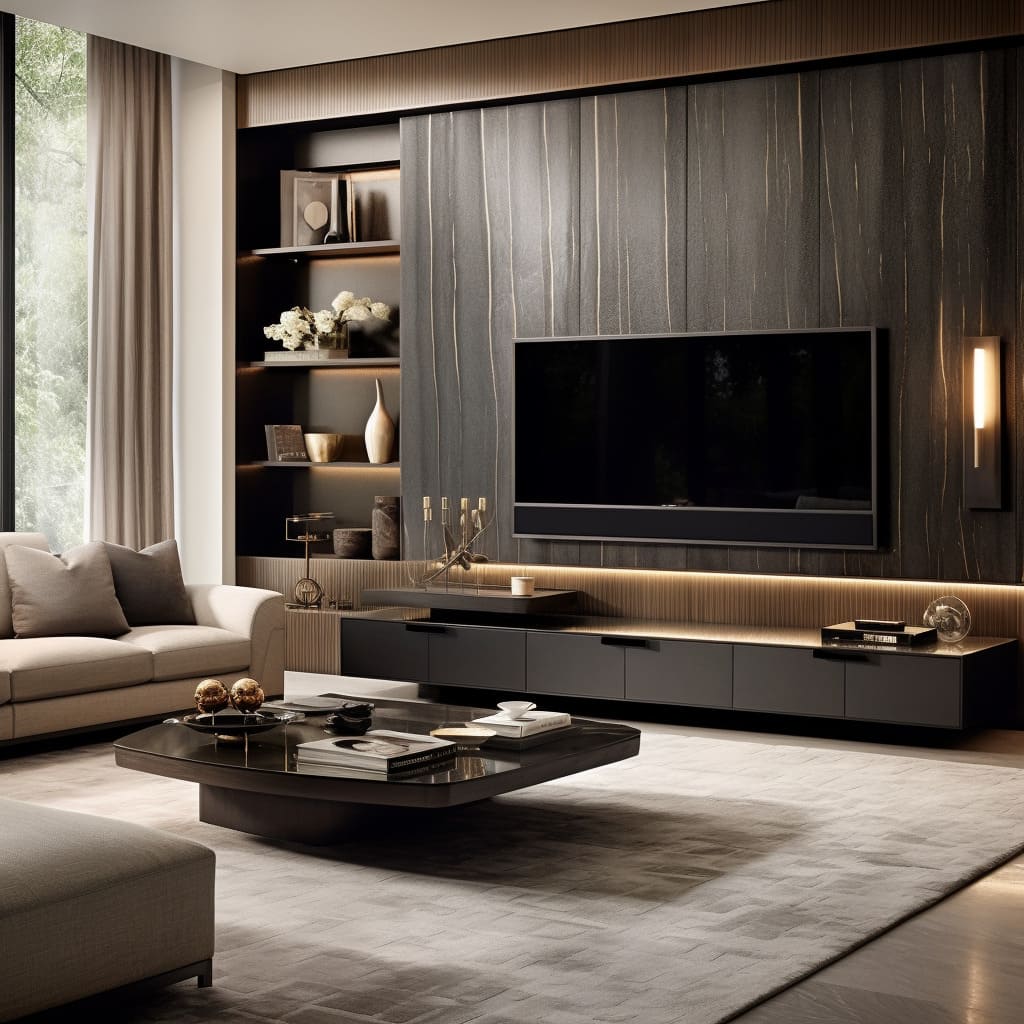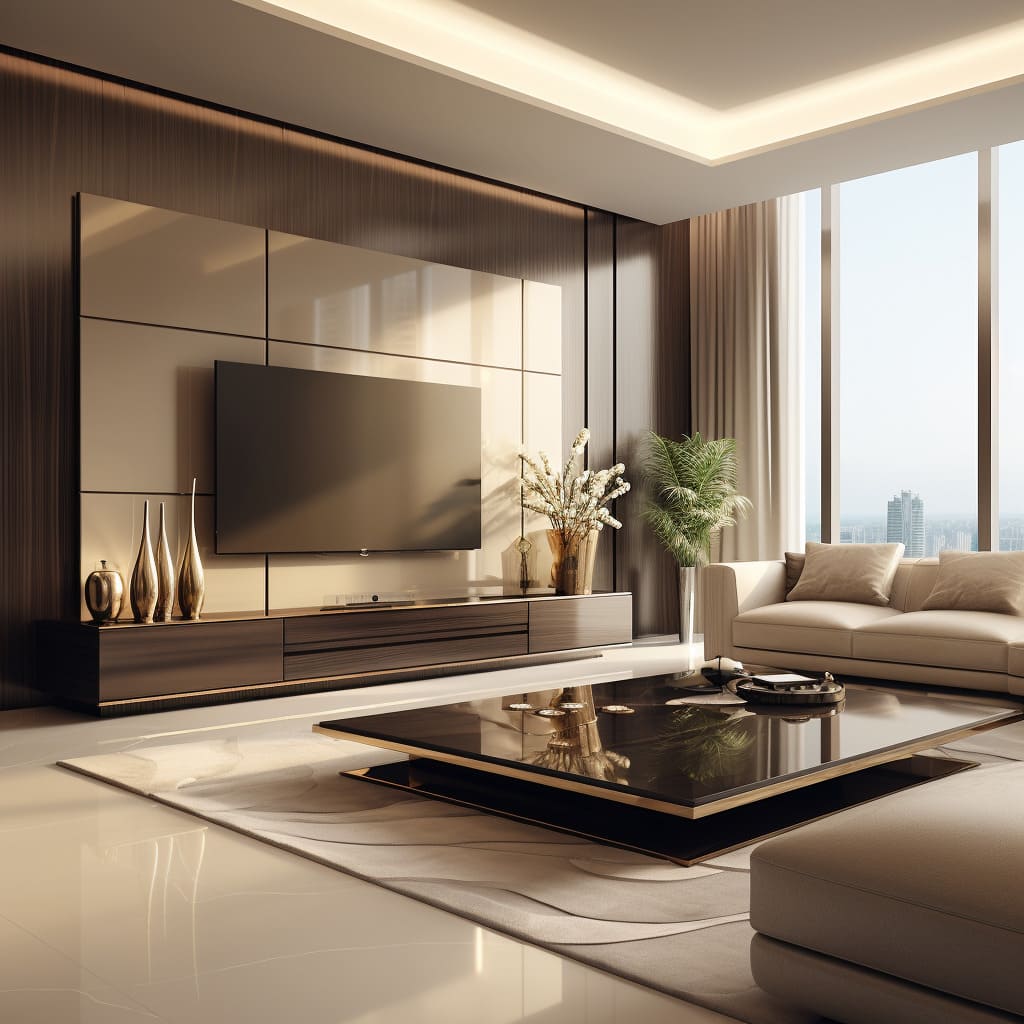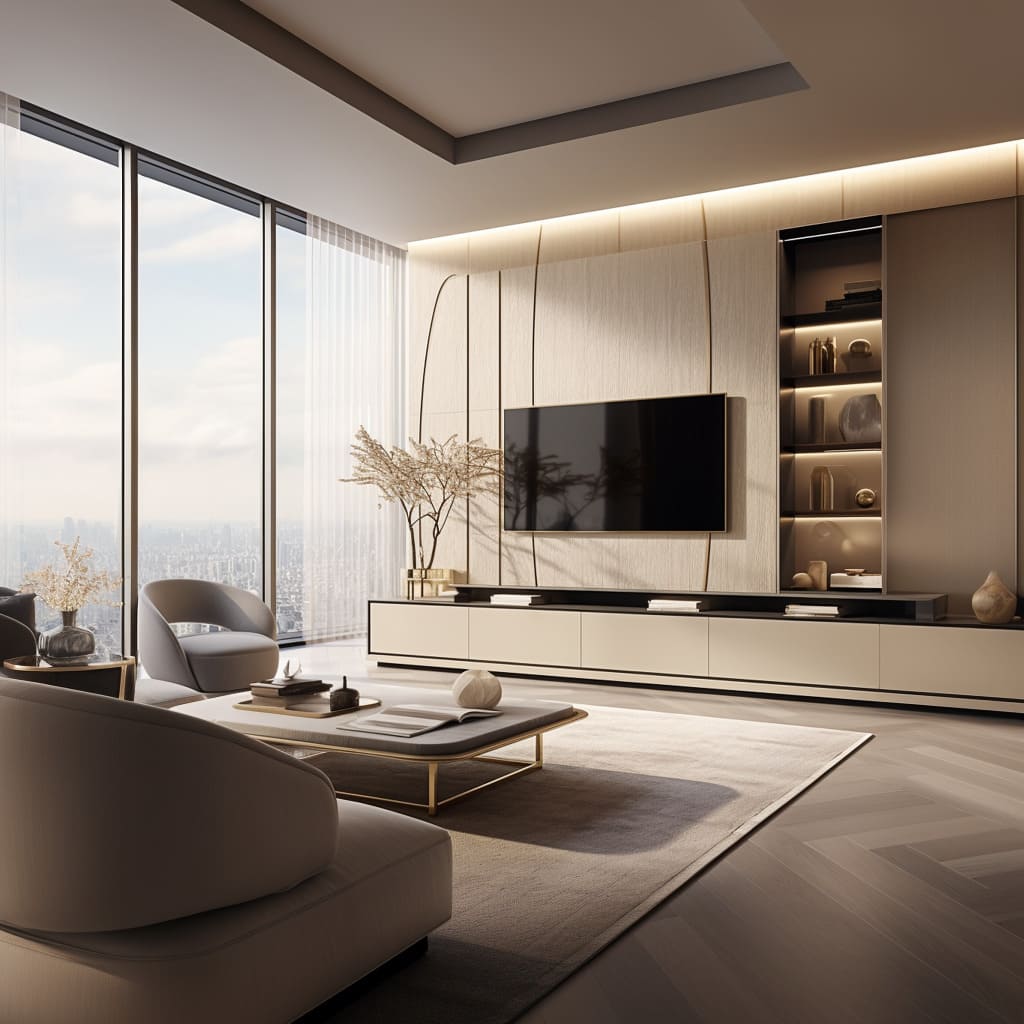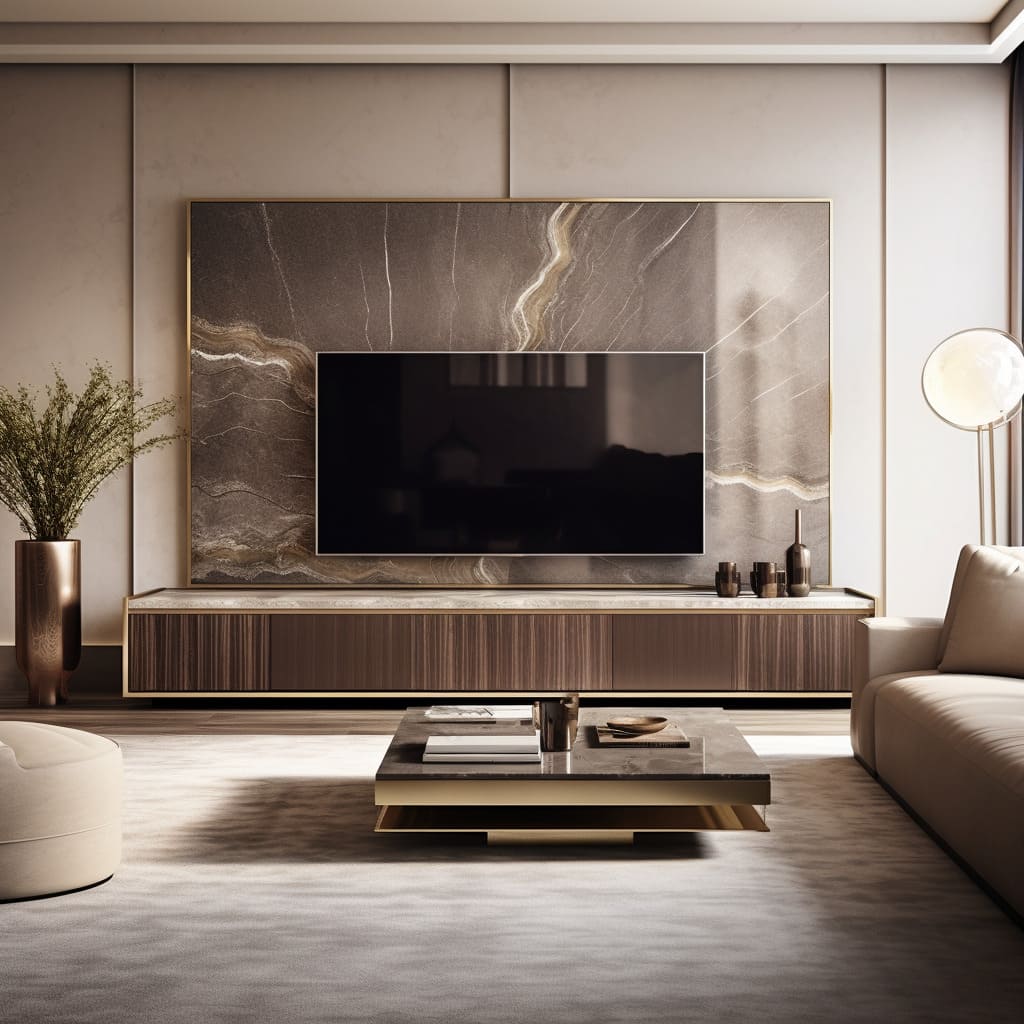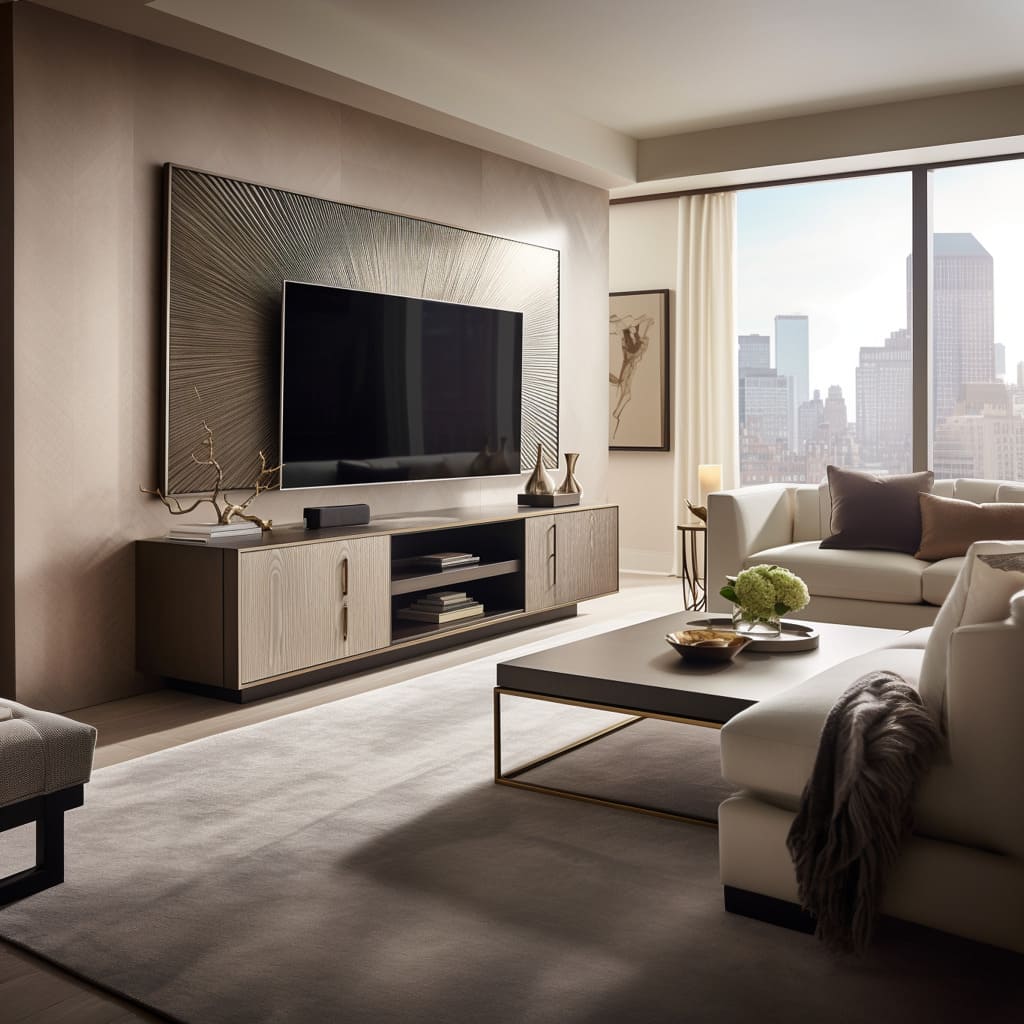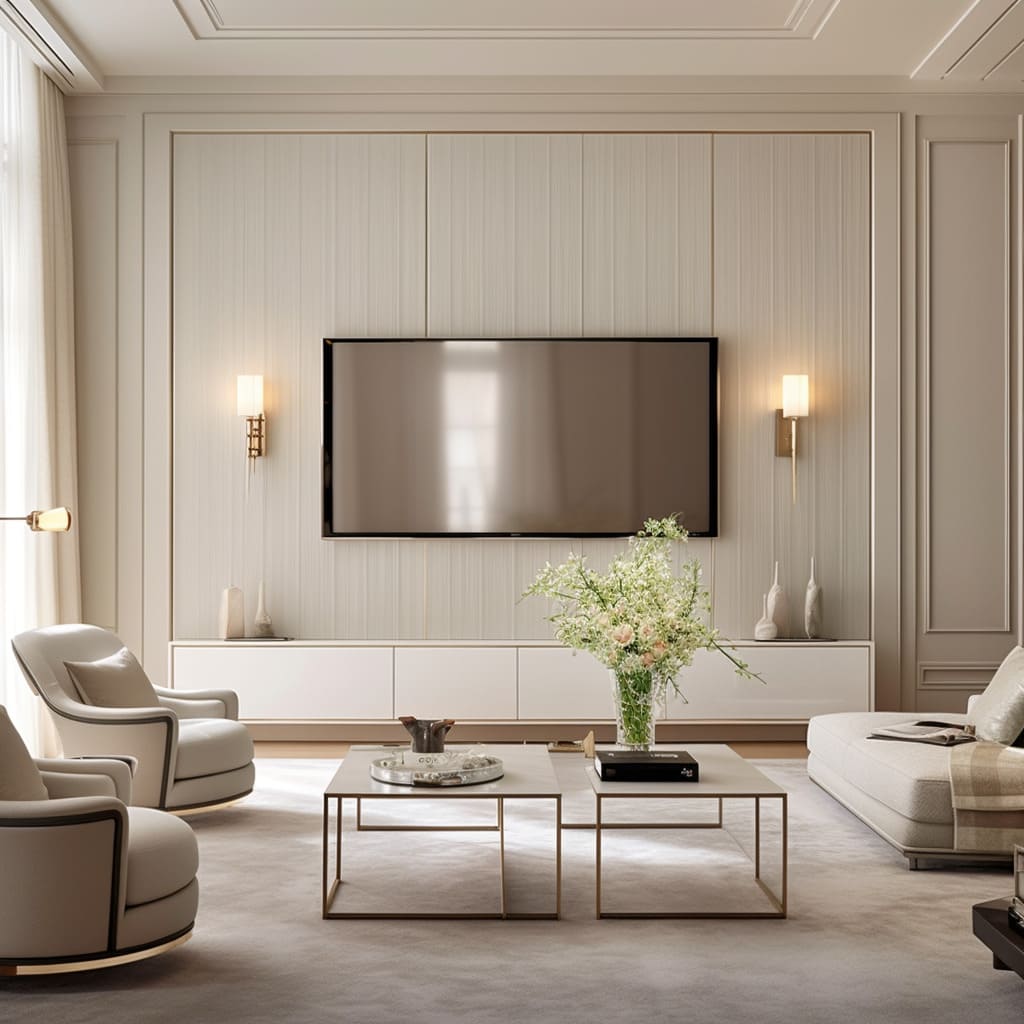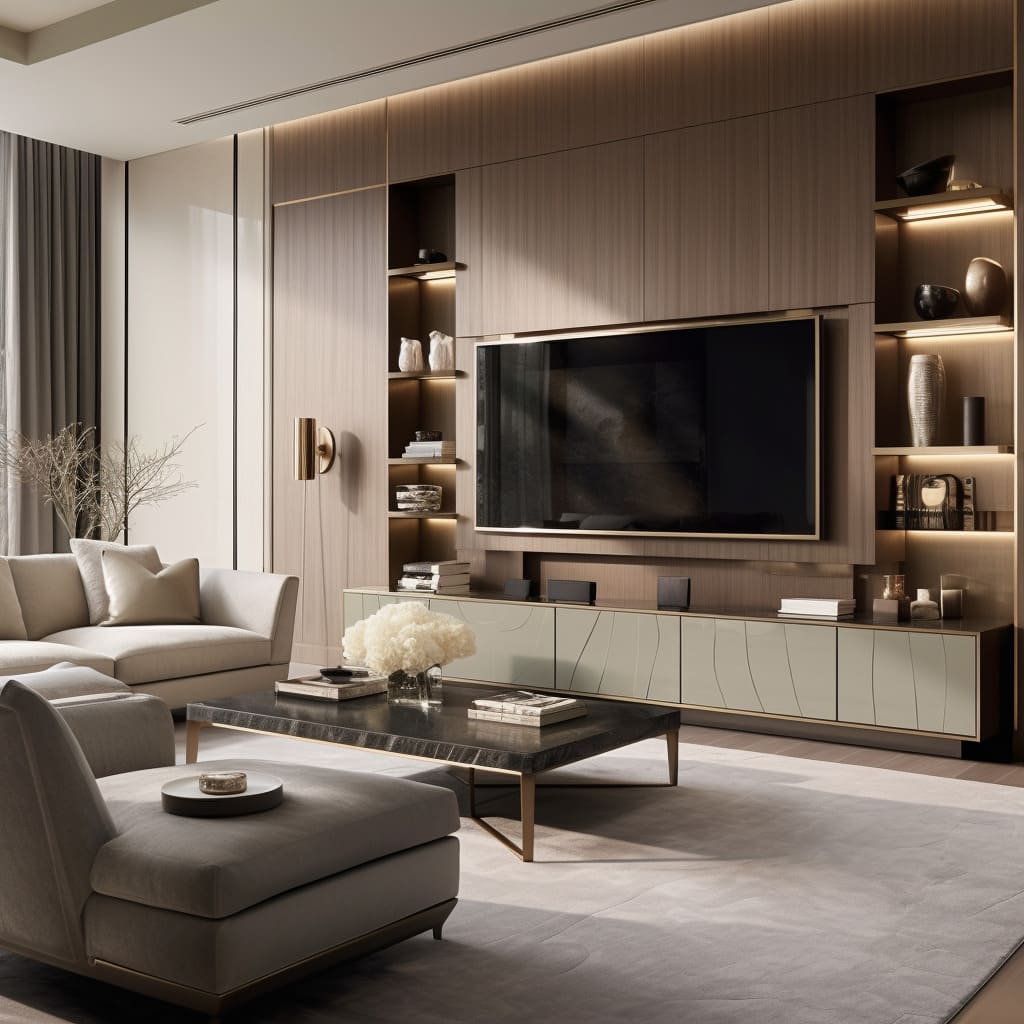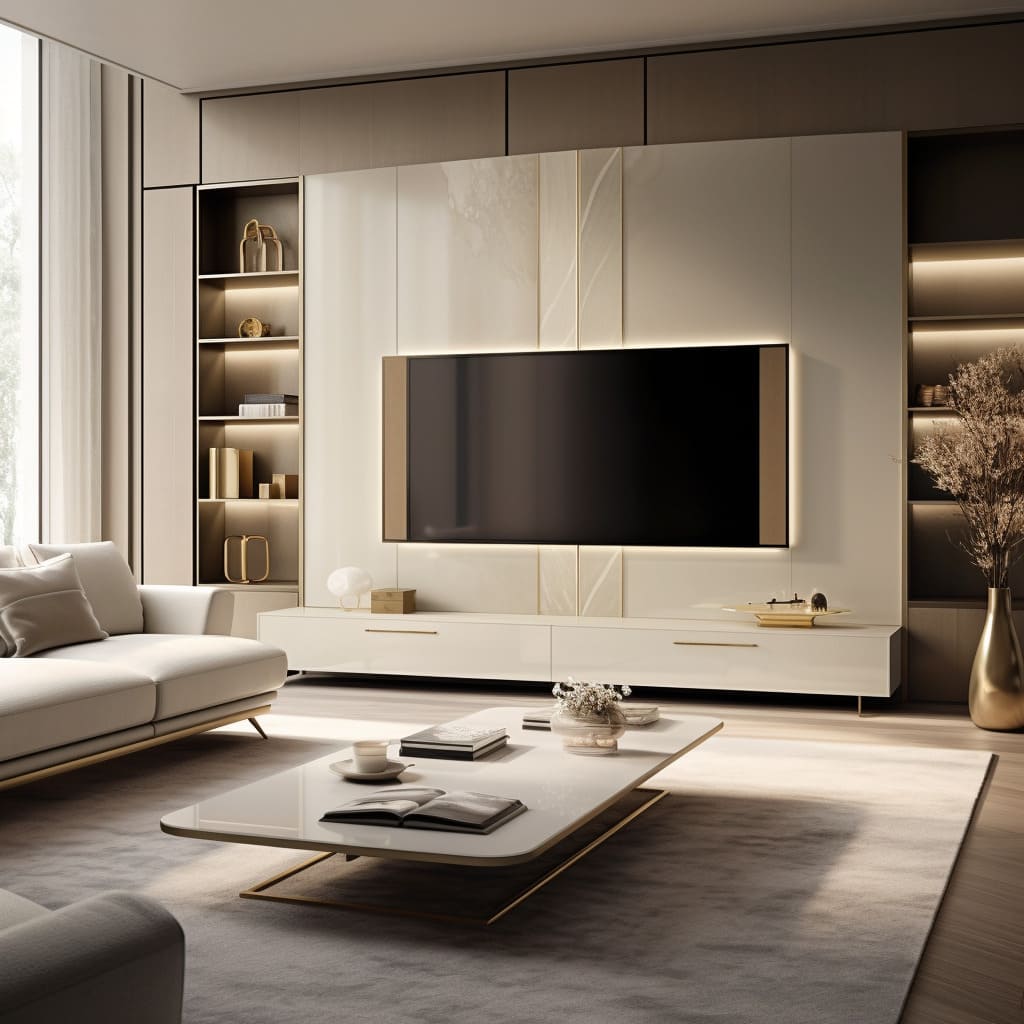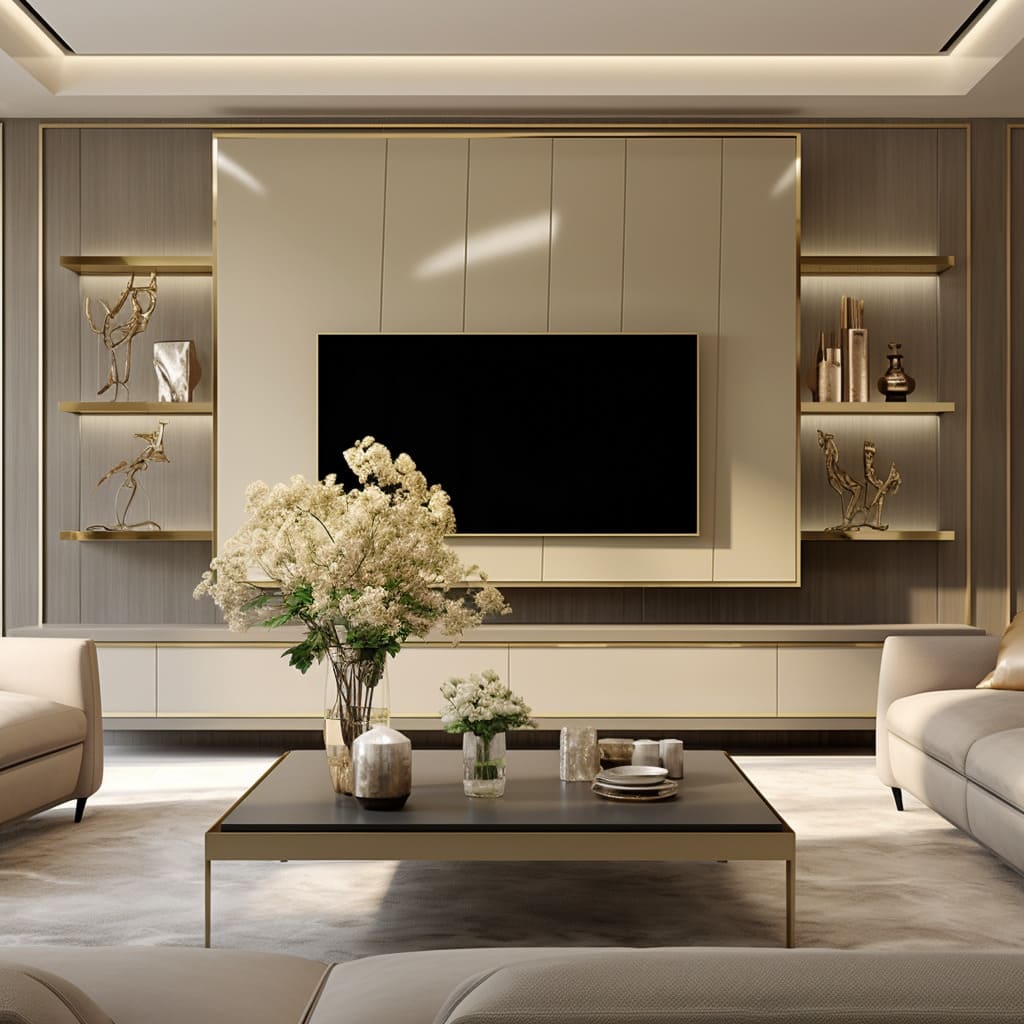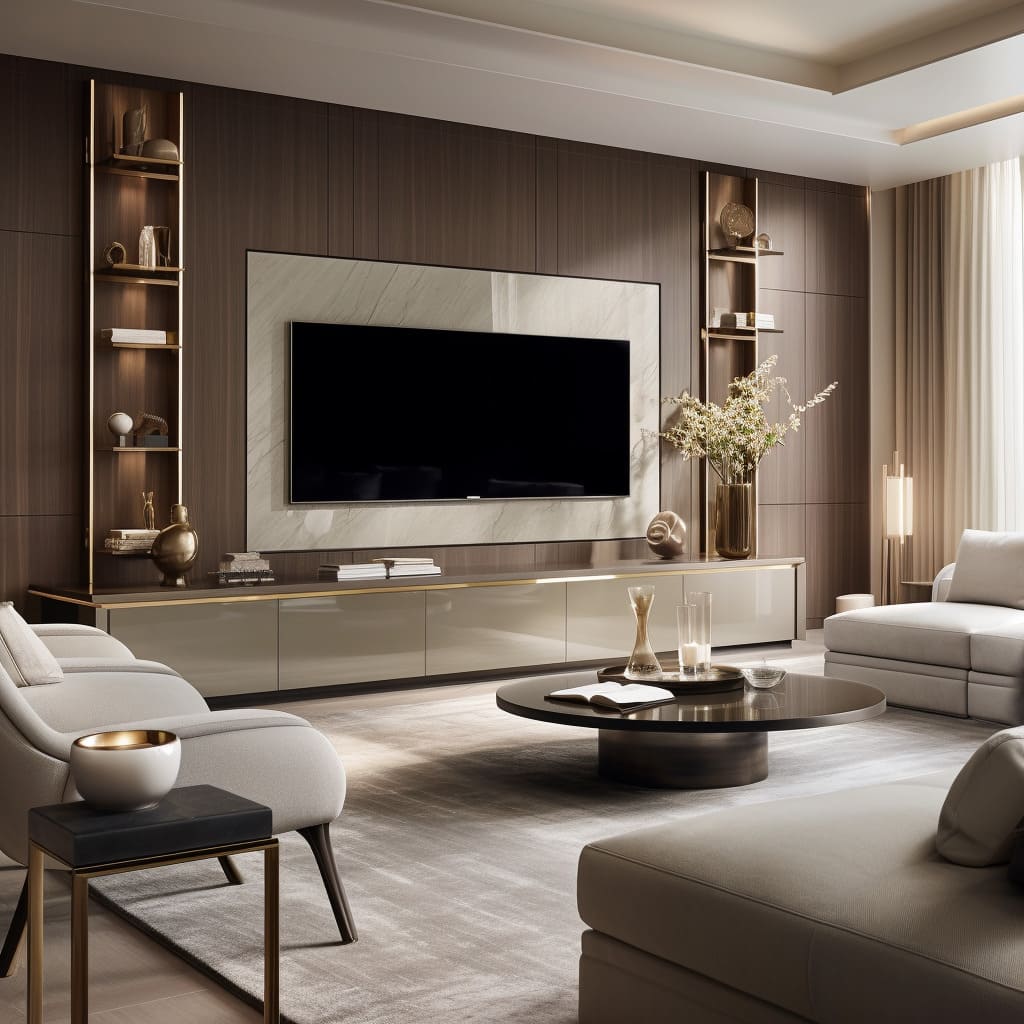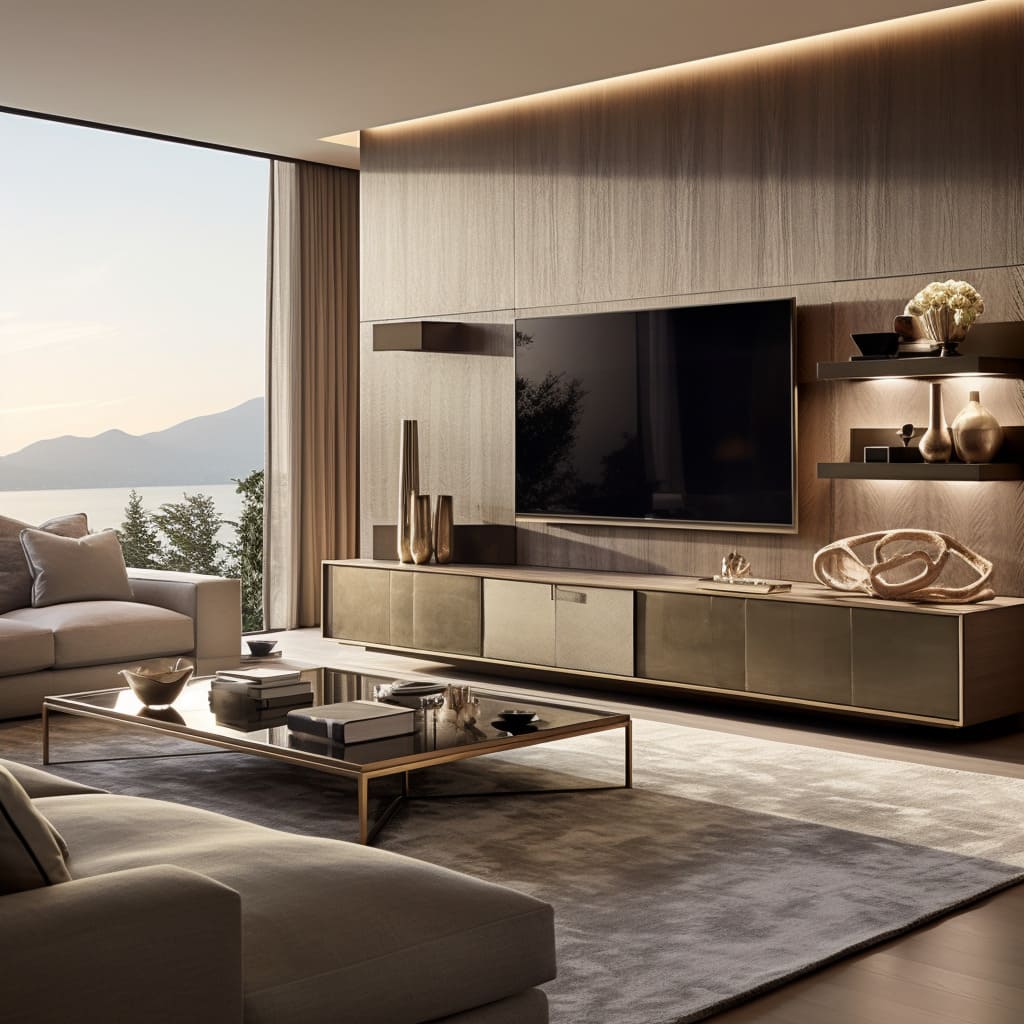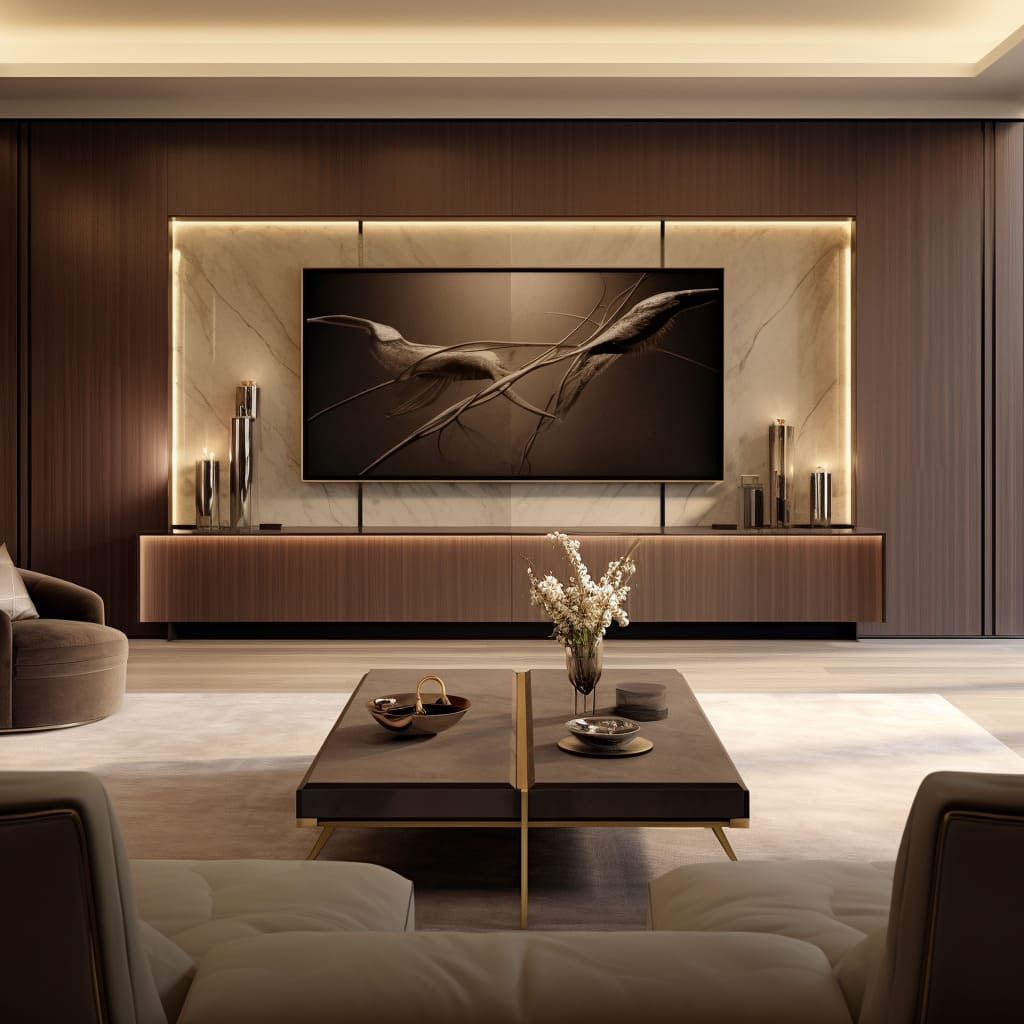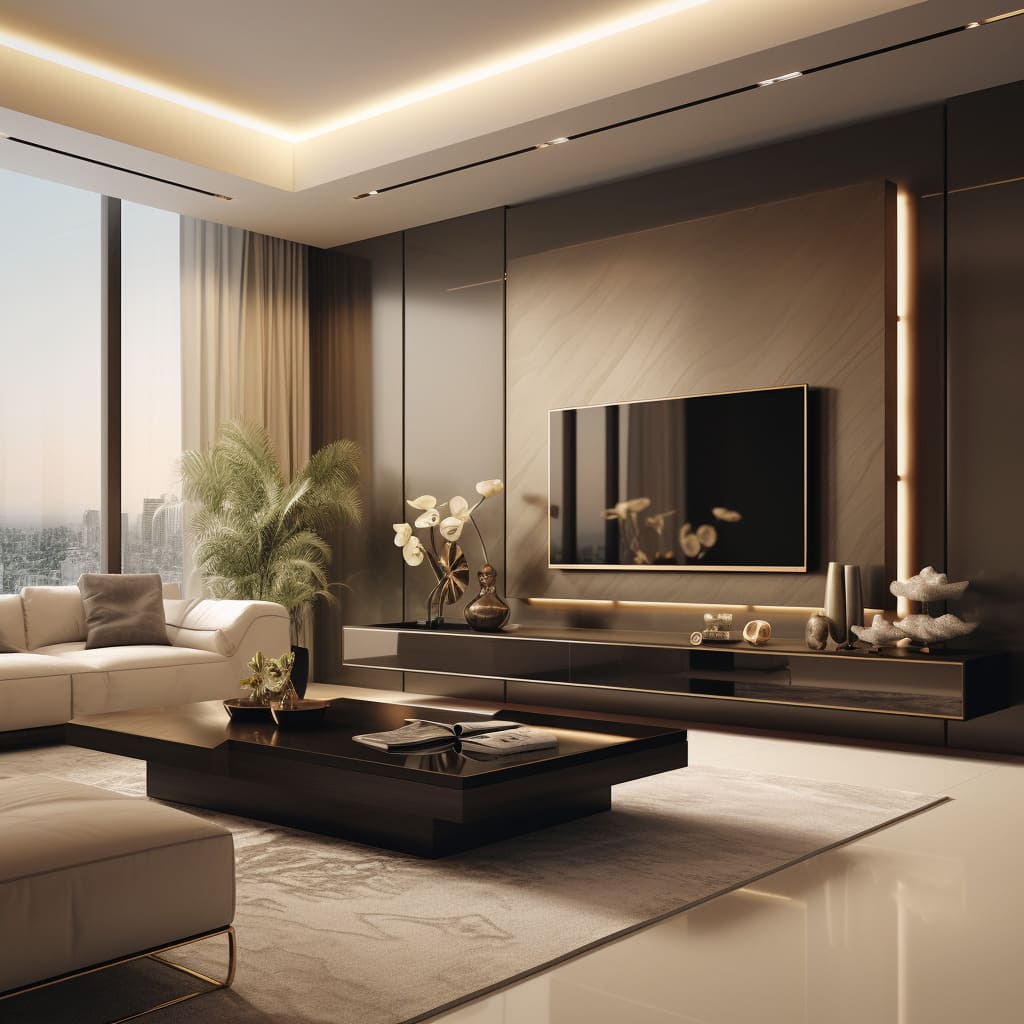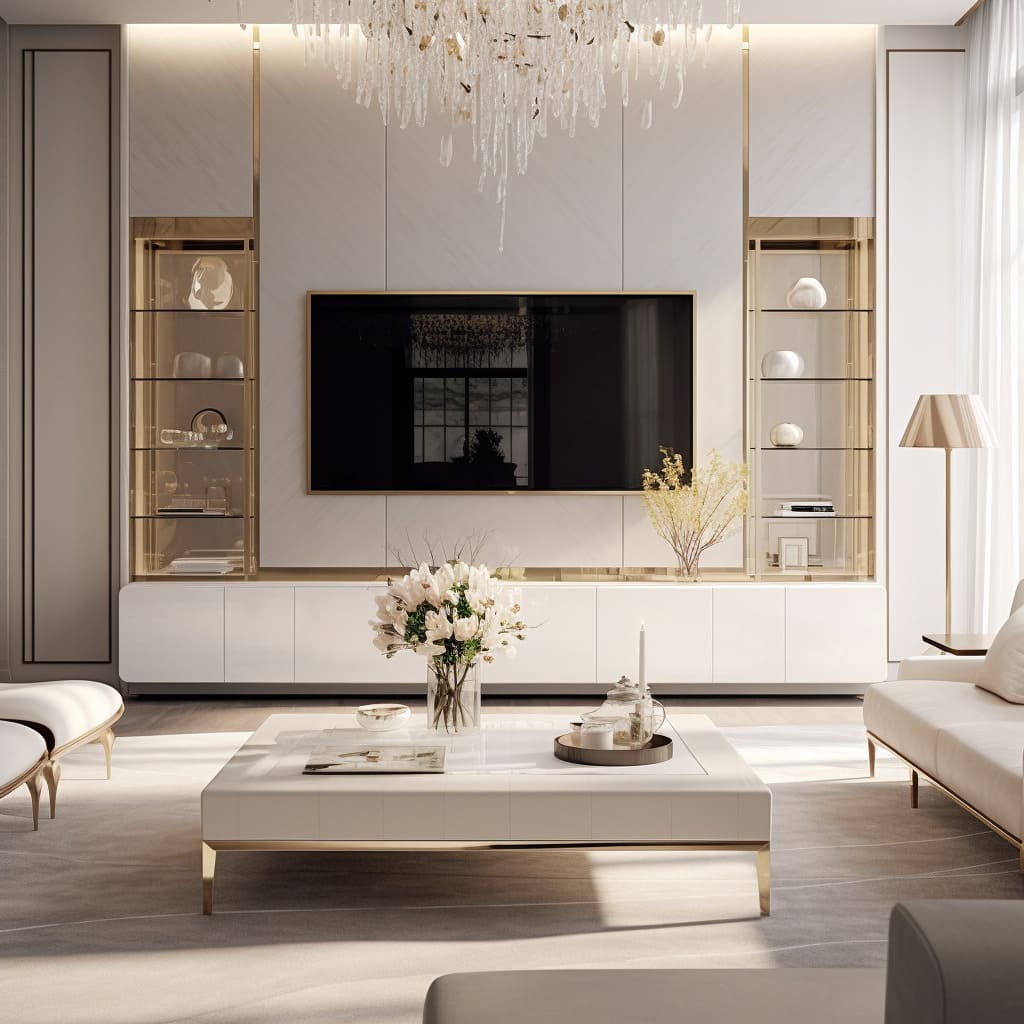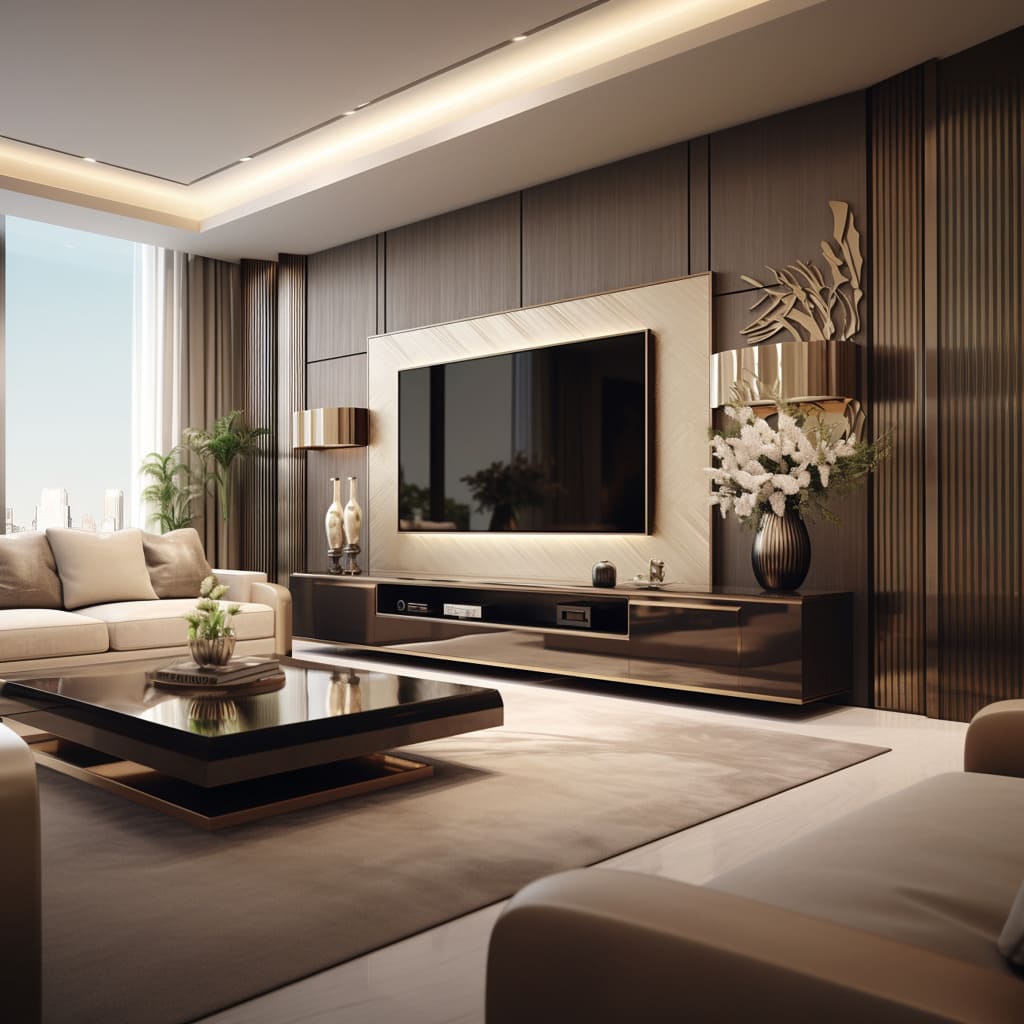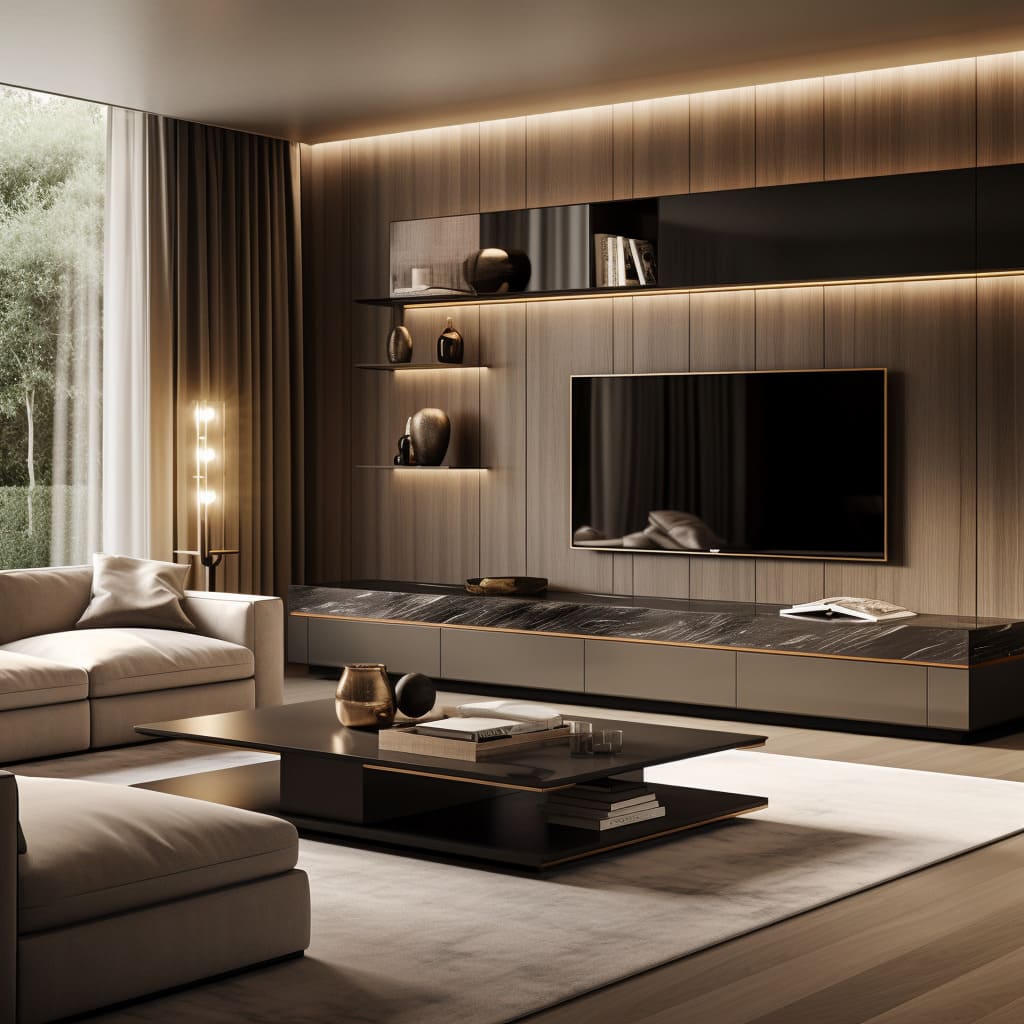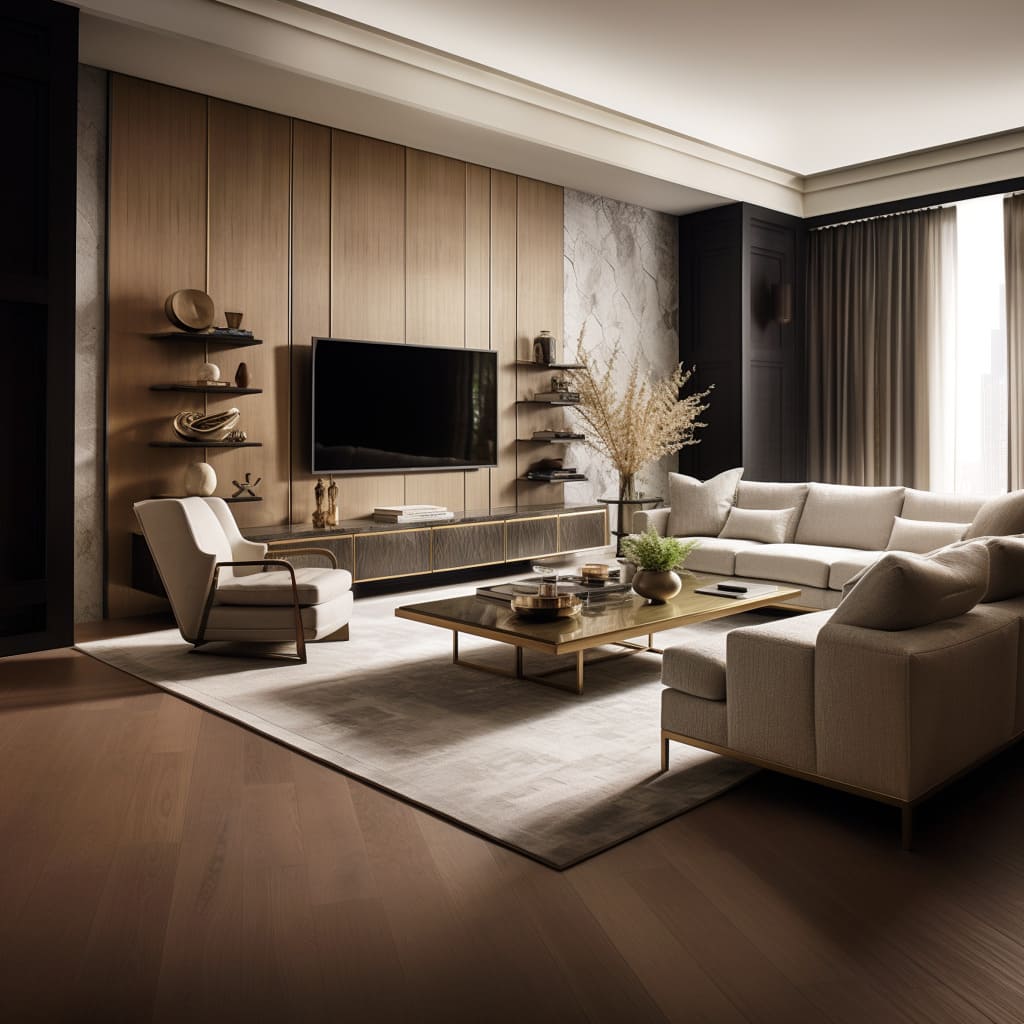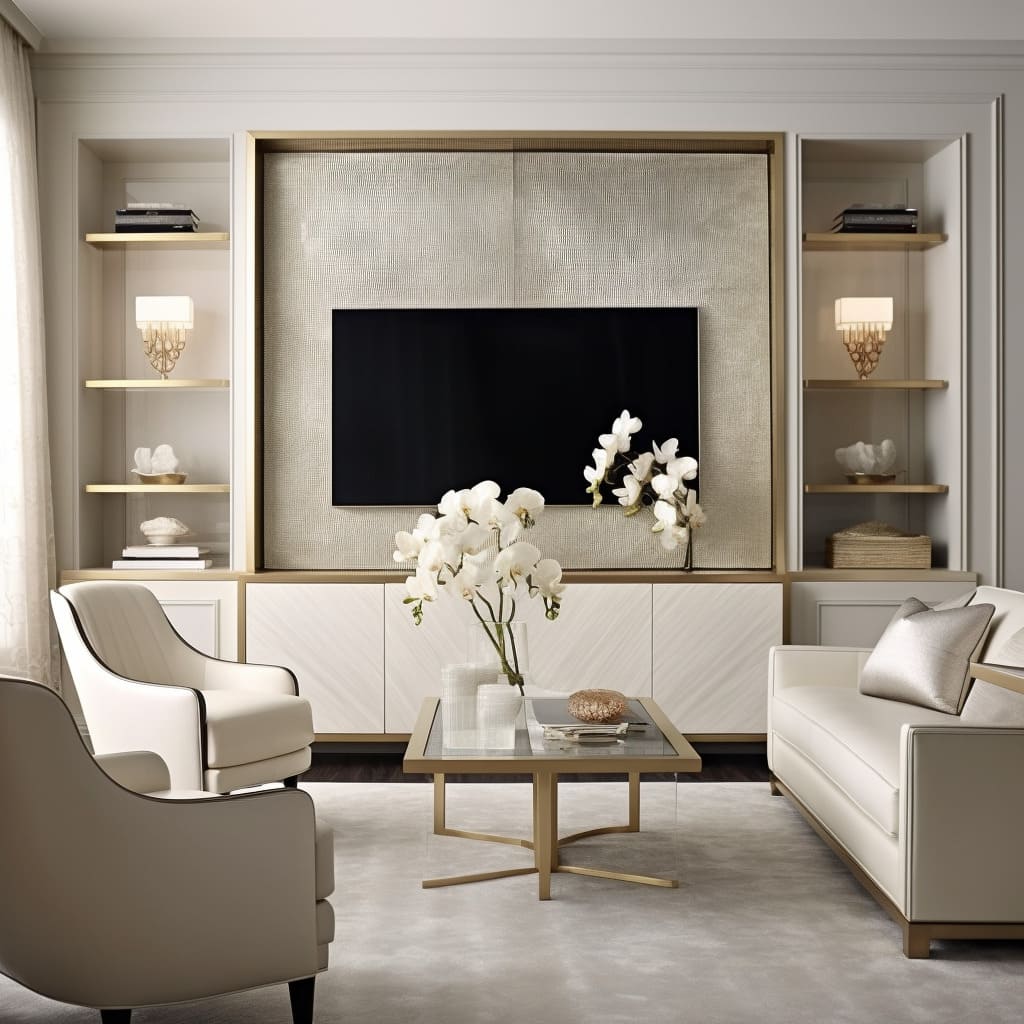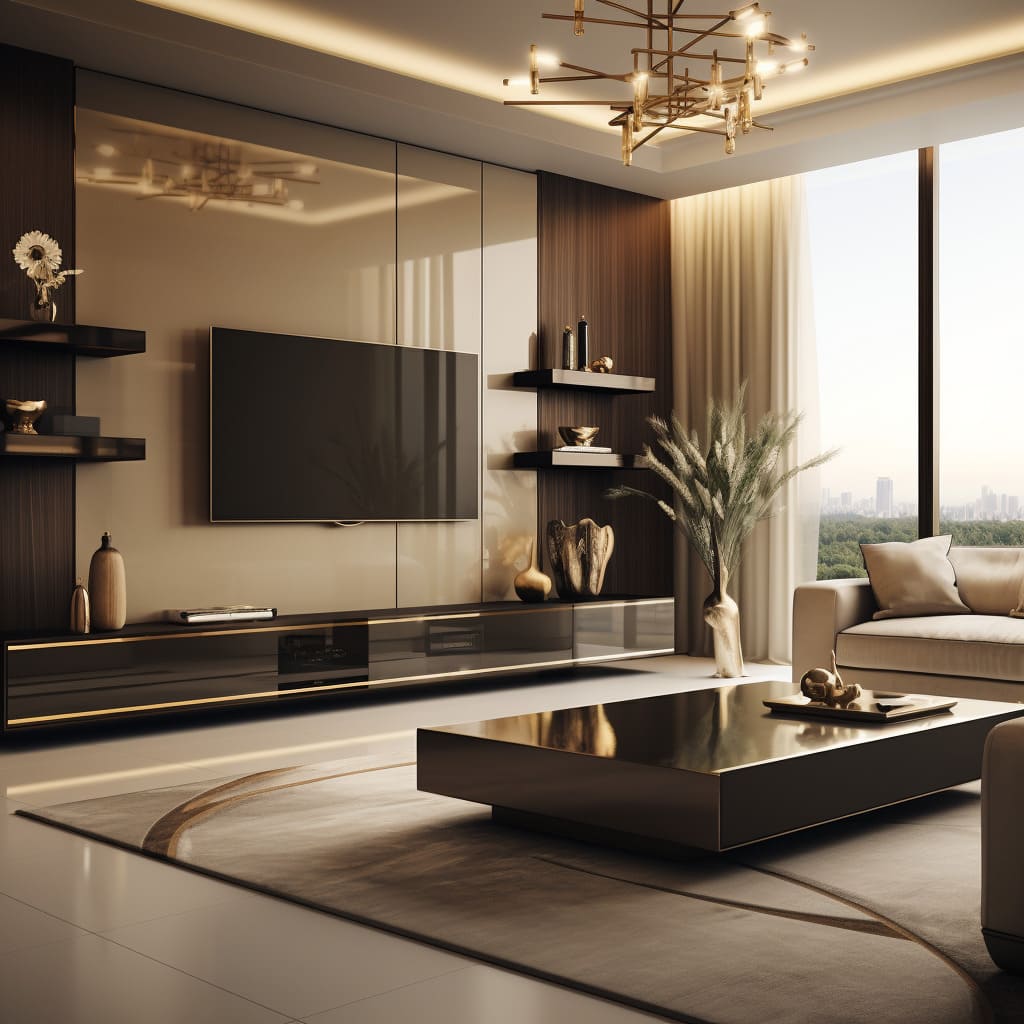The TV wall has evolved significantly from being a mere stand for televisions to becoming a pivotal design element in small living rooms and spacious homes. It’s transformed into a multifunctional feature that fuses practicality with aesthetic appeal, serving as a platform for personal expression and stylistic flair.
This space is no longer just for viewing your favorite shows; it’s a canvas where functionality meets creativity. The choice of materials, the integration of storage solutions, the interplay of colors and textures—all of these aspects come together to create a living space that reflects your individual taste and lifestyle.
We’ll delve into how investing thought and design into your TV wall can redefine the atmosphere and utility of your living room.
For an in-depth guide to TV wall unit designs and features, make sure to read our comprehensive article. It offers a wealth of ideas to enhance your living room. Check it out here: Guide to TV Wall Unit Designs
.
The Role of the TV Wall
In any living room, the TV wall commands attention. It’s the focal point that first catches the eye upon entry, much like a centerpiece on a dining table or a headboard in a bedroom.
But its significance extends beyond merely hosting a television set. This wall is a narrative of your design sensibilities, exhibiting your penchant for modern minimalism, your affection for rustic charm, or your preference for sleek sophistication.
This statement reflects who you are and how you live, subtly yet powerfully communicating the overall ambiance and aesthetic of your home, as exemplified by a luxurious wood panel TV wall design in spacious homes..
The Central Focus: Positioning Your TV Wall
Strategically positioned, the TV wall becomes the living room’s anchor, much like the hearth was in days gone by. It determines the arrangement of furniture, directs the flow of movement, and sets the parameters for interaction within the space.
It’s not just a backdrop but a stage that hosts the daily drama of family life, from the laughter that accompanies a comedy show to the hushed anticipation of a movie’s climax, enhanced by contemporary TV wall designs with LED lighting for home theaters. It is the gathering spot, the communal hub where memories are made, making its design and placement as crucial as any functional piece of furniture in your home.
How Much Value Can Your Budget Unlock?
Check How Far Your Money Can Go. Get Instant Results!
[budget_renovation_calculator]
The Aesthetic Appeal of the TV Wall
The allure of a well-designed TV wall lies in its blend of finishes and materials that can capture and reflect light in various intriguing ways. The dance between glossy and matte surfaces creates a dynamic visual effect that shifts with the time of day and the changing natural light.
During the day, a glossy finish might sparkle in the sunlight, bringing a vibrant energy to the room.
As evening falls, matte surfaces offer a soothing counterpoint, absorbing the harshness of artificial light and lending a more intimate feel to the space. This contrast not only adds depth and character but also enhances the room’s visual appeal, making the TV wall not just functional but a piece of art in itself.
The Functionality of the TV Wall
A thoughtfully designed TV wall is a testament to smart living. It’s a multipurpose solution that supports your television while also offering space for decorative elements and personal items like books, family photos, and travel keepsakes.
Beyond aesthetics, it’s engineered to conceal cables and wires, maintaining a clean and uncluttered appearance. It can even integrate technological enhancements, such as built-in speakers or smart lighting, that cater to a seamless entertainment experience.
“The functionality of the TV wall is a harmonious blend of form and purpose, where every design decision enhances the living experience, incorporating multi-functional TV wall units with built-in bookshelves and storage..
Storage Functions
The practicality of TV walls is significantly amplified by their storage capabilities. They often come equipped with an array of shelves, drawers, and cabinets designed to house everything from multimedia devices to board games and books.
This storage is not just about hiding away clutter but about keeping the living space versatile and adaptable to various needs. Whether it’s showcasing prized collectibles or storing away everyday items, the TV wall’s storage functions are integral to maintaining an organized and tidy living area.
Material Selection for TV Walls
The choice of materials for a TV wall is pivotal in setting the room’s tone. Woods can vary from the deep, dark hues of mahogany to the light, soothing tones of birch or maple.
Glass can be frosted for a gentle translucence or crystal clear for a sharp, modern edge. Metals can add a touch of industrial chic or classic elegance.
Each material plays a specific role in creating a cohesive design language for the TV wall, influencing not just the look but also the feel of the room.
Glossy vs. Matte
The debate between glossy and matte finishes is a matter of light and ambiance.
Glossy surfaces act as mirrors, reflecting light and adding a dynamic quality to the room. They can make spaces feel larger, more open, and more connected.
Matte surfaces, on the other hand, offer a more subdued, understated elegance. They absorb light, reducing glare, and providing a calm, grounded presence in the room.
The choice between glossy and matte can dramatically alter the room’s mood, making it crucial to consider the desired atmosphere when designing your TV wall.
Matching Colors and Finishes
When it comes to creating a TV wall, the harmony between colors and finishes is paramount. The shades and textures chosen for this feature must complement each other, creating a coherent visual narrative.
Wood, with its natural warmth and variety, offers endless possibilities—from the rustic charm of weathered oak to the contemporary sleekness of walnut. Metals, too, play a crucial role; accents in gold, silver, or brushed nickel can lend a touch of opulence or modernity.
The strategic use of color can transform your TV wall from a mere functional element to a deliberate, beautiful focal point in your living space. It’s about finding the right balance where each tone and texture feels intentional, contributing to a design that’s both cohesive and aesthetically pleasing.
Built-in Lighting
The illumination of a TV wall is not merely functional; it is an art form that elevates the entire room. Built-in lighting can take various forms, from subtle backlighting that creates a soft halo around the television to accent lights that draw attention to the objects displayed on shelving.
It’s about understanding how light interacts with different surfaces, enhancing textures and colors, and how it contributes to the overall ambiance of the room. The built-in lighting can highlight the architectural features of the wall, create depth and dimension, and improve the viewing experience.
It can also be tailored to adapt to different moods and occasions—bright and vibrant for a family gathering, or dimmed down for a cozy movie night. The right lighting not only showcases your favorite things but also sets the tone for memorable moments in the comfort of your living room.
Making it All Match
The design of a TV wall should be a natural extension of the room’s overall aesthetic. It requires a keen eye for detail to ensure that the colors, materials, and finishes of the wall resonate with the rest of the living space.
When these elements are in sync, the TV wall looks as though it was meant to be there from the beginning, an integral part of the room’s design rather than an afterthought. The textures on the wall should complement the softness of the sofa upholstery, the flooring should echo the wall’s elegance, and the overall palette should be a fluid continuation of the room’s color scheme.
This cohesion creates a sense of unity and belonging, making the living room not just a collection of furniture and features but a singular, harmonious space.
The Power of Color
The impact of color on the atmosphere of a room cannot be overstated, especially when it comes to the TV wall. Colors have the power to evoke emotions and set the tone for the entire living space.
Dark hues can imbue the room with a sense of sophistication and drama, creating an enveloping atmosphere that invites immersion in cinematic experiences. On the other hand, lighter shades can open up the space, instilling it with a breathable, airy quality that can make the room feel more expansive and welcoming.
The color of the TV wall can act as a backdrop that influences not just the visual, but the psychological ambiance of the space. It’s crucial to select a palette that not only complements the room but also aligns with the emotions and behaviors you wish to foster within the space.
Integrating Technology and Design
In the modern home, technology is a central part of our daily lives, and the TV wall is often the showcase for the latest advancements. But technology should enhance, not overpower, the design of a room.
The TV wall can be crafted to blend screens, speakers, and even smart home controls seamlessly into its structure. This could mean hidden compartments that reveal themselves at the touch of a button, or speakers that are built into the wall itself, providing sound that seems to come from everywhere and nowhere at once.
Sustainable and Ethical Choices
As we become more conscious of our environmental impact, the materials and methods we choose for our homes carry greater significance. Sustainable woods, recycled metals, and non-toxic paints are just some of the choices available for those looking to build a TV wall that is not only beautiful but also environmentally responsible.
These materials are sourced with care for the planet and often come with stories of their own—like reclaimed wood that once formed part of a historic building, now given a new life as part of your home. By choosing sustainable and ethical options, the TV wall becomes not just a focal point for design, but a statement of values, reflecting a commitment to the well-being of the environment and future generations.
In conclusion, a TV wall represents the intersection of functionality and artistry within a living room. It’s not just a structural element to mount a television; it’s a statement of personal style and a testament to the fusion of practicality with visual allure.
A well-designed TV wall maintains order, complements the room’s decor, and embodies the homeowner’s taste. It’s the synthesis of carefully chosen colors, materials, and lighting—all working together to create a space that is not just visually stunning but also deeply loved. For a deeper dive into various TV wall designs and features, visit our comprehensive guide.
With the right design approach, a TV wall becomes more than just a part of the room—it becomes the heart of the home, where beauty meets function and where every glance reveals a story of thoughtful design and cherished experiences.

